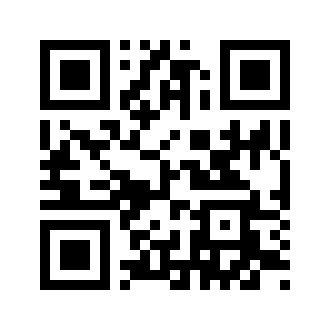In this article we look at a way of generating QR codes using Python
A QR code is a type of two-dimensional barcode invented in 1994 by the Japanese automotive company Denso Wave.
A barcode is a machine-readable optical label that can contain information about the item to which it is attached. In practice, QR codes often contain data for a locator, identifier, or tracker that points to a website or application.
A QR code uses four standardized encoding modes (numeric, alphanumeric, byte/binary, and kanji) to store data efficiently; extensions may also be used.
The Quick Response system became popular outside the automotive industry due to its fast readability and greater storage capacity compared to standard UPC barcodes. Applications include product tracking, item identification, time tracking, document management, and general marketing.
A QR code consists of black squares arranged in a square grid on a white background, which can be read by an imaging device such as a camera, and processed using Reed–Solomon error correction until the image can be appropriately interpreted.
The required data is then extracted from patterns that are present in both horizontal and vertical components of the image
Installation
For a standard install (which will include pillow for generating images), run:
pip install qrcode[pil]
Examples
A basic example
In this example we create a qr code
# importing the qrcode library
import qrcode
# generating a QR code using the make() function
qr_img = qrcode.make("Welcome to maxpython.")
# saving the image file
qr_img.save("qr-img.jpg")
This created the following QR code

Generating an Advanced QR Code
The programmers can customize a QR code using a QRCode object which consists of the parameters shown in the following table:
| Parameter | Description |
|---|---|
| version | There are forty (40) versions of the QR code, which regulates the size of the code. Version 1 is the smallest, whereas version 40 is the largest. Version 1 generates a 21×21 matrix QR code. |
| error_correction | This parameter is used to control the Error Correction utilized for the QR code.
|
| box_size | This parameter is used to regulate the number of pixels in the individual block of the QR code. |
| border | This parameter is used to control the thickness of the border. The default border is 4 pixels thick. |
import qrcode
qr = qrcode.QRCode(
version=1,
error_correction=qrcode.constants.ERROR_CORRECT_L,
box_size=10,
border=4,
)
qr.add_data('Welcome to maxpython.')
qr.make(fit=True)
img = qr.make_image(fill_color="black", back_color="yellow")
Link
https://github.com/lincolnloop/python-qrcode

![Java SE 11 Programmer II [1Z0-816] Practice Tests](https://static.shareasale.com/image/43514/728X9026.jpg)


![Java SE 11 Developer (Upgrade) [1Z0-817]](https://static.shareasale.com/image/43514/728X9033.jpg)
![Java SE 11 Programmer I [1Z0-815] Practice Tests](https://static.shareasale.com/image/43514/728X909.jpg)
